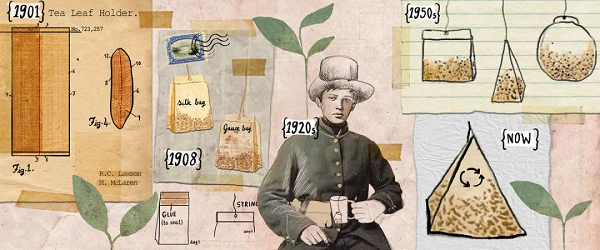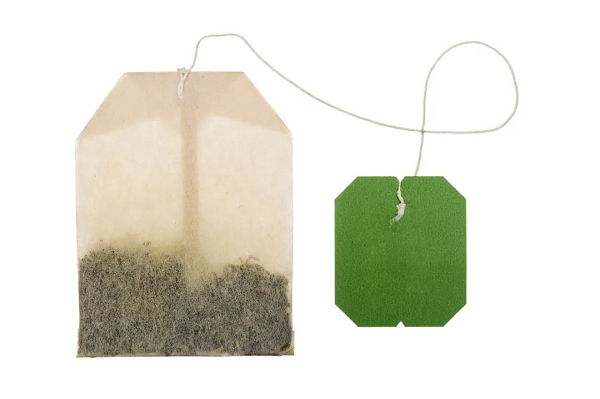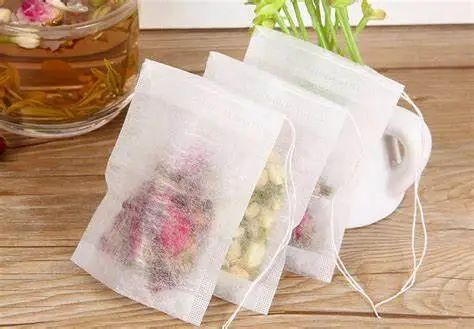When it comes to the history of drinking tea, it is well known that China is the homeland of tea. However, when it comes to loving tea, foreigners may love it even more than we imagine.
In ancient England, the first thing people did when they woke up was to boil water, for no other reason, to make a pot of hot tea. Although waking up early in the morning and drinking hot tea on an empty stomach was an incredibly comfortable experience. But the time it takes and the cleaning of the tea utensils after drinking tea, even if they love tea, it really makes them a bit troublesome!
So they began to think of ways to drink their beloved hot tea more quickly, conveniently, and at any time and place. Later, due to a casual attempt by tea merchants, “tea bag” emerged and quickly became popular.
The Legend of the Origin of Bagged Tea
Part 1
Easterners value a sense of ceremony when drinking tea, while Westerners tend to only treat tea as a beverage.
In the early days, Europeans drank tea and learned how to brew it in Eastern teapots, which was not only time-consuming and laborious, but also very troublesome to clean. Later on, people began to think about how to save time and make it convenient to drink tea. So Americans came up with the bold idea of “bubble bags”.
In the 1990s, American Thomas Fitzgerald invented tea and coffee filters, which were also the prototype of early tea bags
In 1901, two Wisconsin ladies, Roberta C. Lawson and Mary McLaren, applied for a patent for the “tea rack” they designed in the United States. The “tea rack” now looks like a modern tea bag.
Another theory is that in June 1904, Thomas Sullivan, a New York tea merchant in the United States, wanted to lower business costs and decided to put a small amount of tea samples into a small silk bag, which he sent to potential customers to try. After receiving these strange small bags, the puzzled customer had no choice but to try soaking them in a cup of boiling water.
The result was completely unexpected, as his customers found it very convenient to use tea in small silk bags, and orders flooded in.
However, after delivery, the customer was greatly disappointed and the tea was still in bulk without the convenient small silk bags, which caused complaints. Sullivan, after all, was a clever businessman who gained inspiration from this incident. He quickly replaced silk with a thin gauze to make small bags and processed them into a new type of small bag tea, which was very popular among consumers. This small invention brought considerable profits to Sullivan.
Part 2
Drinking tea in small cloth bags not only saves tea but also facilitates cleaning, quickly becoming popular.
At the beginning, American tea bags were called “tea balls“, and the popularity of tea balls can be seen from their production. In 1920, the production of tea balls was 12 million, and by 1930, the production had rapidly increased to 235 million.
During World War I, German tea merchants also began producing tea bags, which were later used as military equipment for soldiers. Frontline soldiers called them Tee Bombes.
For the British, tea bags are like food rations. By 2007, bagged tea had even occupied 96% of the UK tea market. In the UK alone, people drink approximately 130 million cups of bagged tea every day.
Part 3
Since its inception, bagged tea has undergone various changes
At that time, tea drinkers complained that the mesh of the silk bags was too dense, and the flavor of the tea could not fully and quickly penetrate into the water. Afterwards, Sullivan made a modification to the bagged tea, replacing silk with thin gauze paper woven from silk. After using it for a period of time, it was found that the cotton gauze seriously affected the taste of the tea soup.
Until 1930, American William Hermanson obtained a patent for heat sealed paper tea bags. The tea bag made of cotton gauze was replaced by filter paper, which is made of plant fibers. The paper is thin and has many small pores, making the tea soup more permeable. This design process is still in use today.
Later in the UK, Tatley Tea Company began mass producing bagged tea in 1953 and continuously improved the design of tea bags. In 1964, the material of tea bags was improved to be more delicate, which also made bagged tea more popular.
With the development of industry and technological improvements, new materials of gauze have emerged, which are woven from nylon, PET, PVC, and other materials. However, these materials may contain harmful substances during the brewing process.
Until recent years, the emergence of corn fiber (PLA) materials has changed all of this.
The PLA tea bag made of this fiber woven into a mesh not only solves the problem of visual permeability of the tea bag, but also has a healthy and biodegradable material, making it easy to drink high-quality tea.
Corn fiber is made by fermenting corn starch into lactic acid, then polymerizing and spinning it. The corn fiber woven thread is arranged neatly, with high transparency, and the shape of the tea can be clearly seen. Tea soup has a good filtering effect, ensuring the richness of tea juice, and tea bags can be completely biodegradable after use.
Post time: Mar-18-2024








